How to Display Katana on a Wall: Steps, Equipment, and Tips
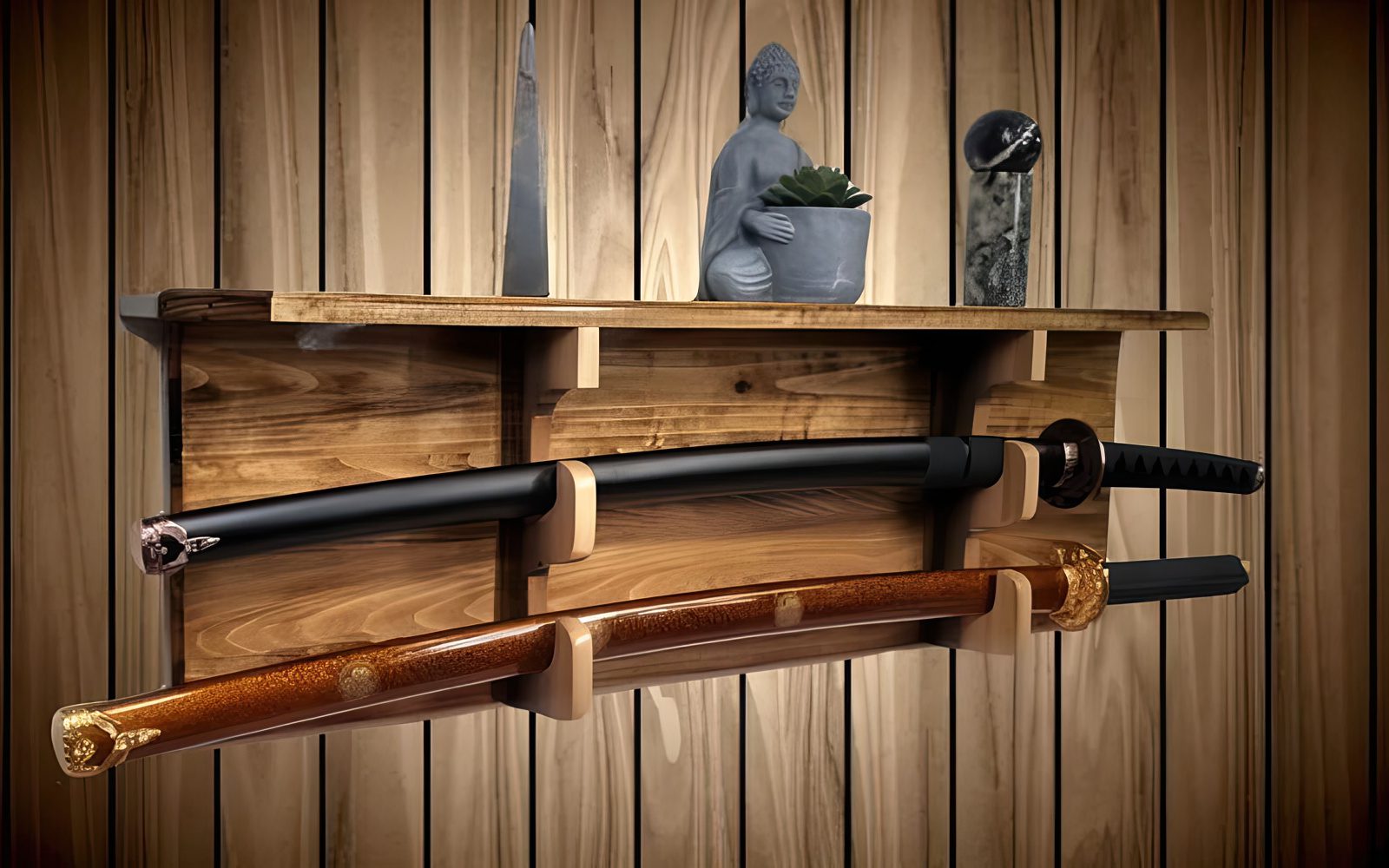
What’s in this article?
Mounting a katana sword mounted on the wall can be a great way to display part of your Japanese sword collection. Presenting your katana this way takes up little space and can be shown in different places around your home, depending on personal preference.
This article will demonstrate how to display your katana sword on a wall, starting with the basic steps to ensure that the mount you’ll use will be a solid structure. We will also go over six different katana wall mounting pieces of equipment. Finally, we will conclude the article by presenting a few valuable tips when placing a katana on a wall.
Displaying a Katana on a Wall
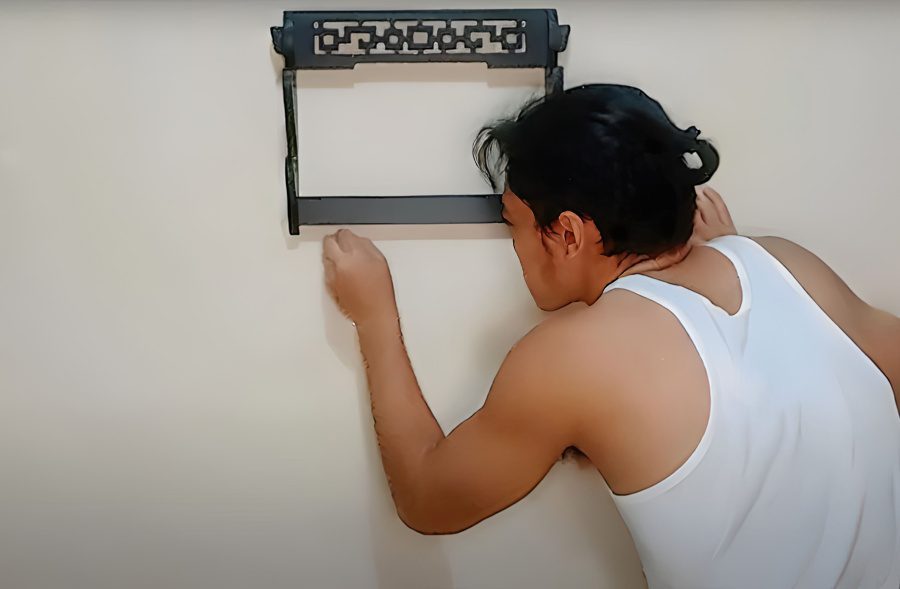
The mounting shelf of the katana sword should be carefully placed on the wall with precise measures to ensure that it is hung straight. Doing so will prevent the sword from falling or becoming unsheathed from its scabbard. Screws or pegs are used to secure the mount to the wall.
It is important to mark the holes where the pegs or screws will go with a pencil or marker beforehand. It is also advisable to use drywall anchors or threaded hooks, as these will better support the weight of the mount and sword. The holes can be started with the tap of a hammer, but drilling is recommended for an adequate fit.
Katana Wall Mounting Equipment
The katana sword can be mounted on the wall in various styles using different wall-mounting equipment. A unique look is brought to the katana display depending on the space it uses on the wall. Here are some popular wall mounting equipment choices.
Wall Hooks
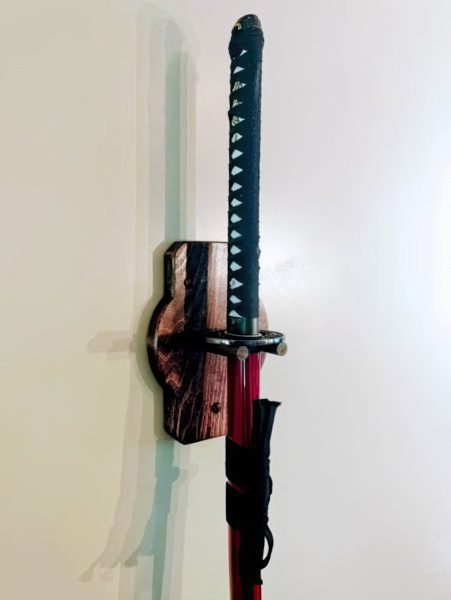
The easiest way to display a katana on a wall is by using wall hooks. They are easy to work with and come in a variety of shapes and sizes. Some designs are placed on a wooden mount, while some can be placed directly on the wall depending on personal preference.
It is advisable to choose stainless steel wall hooks because they require less maintenance. They can be placed next to each other so that the katana can be mounted vertically by its guard, separated from each so the katana can be displayed horizontally. Wall hooks allow for a clean display of the weapon and easy accessibility.
Wall Hanger
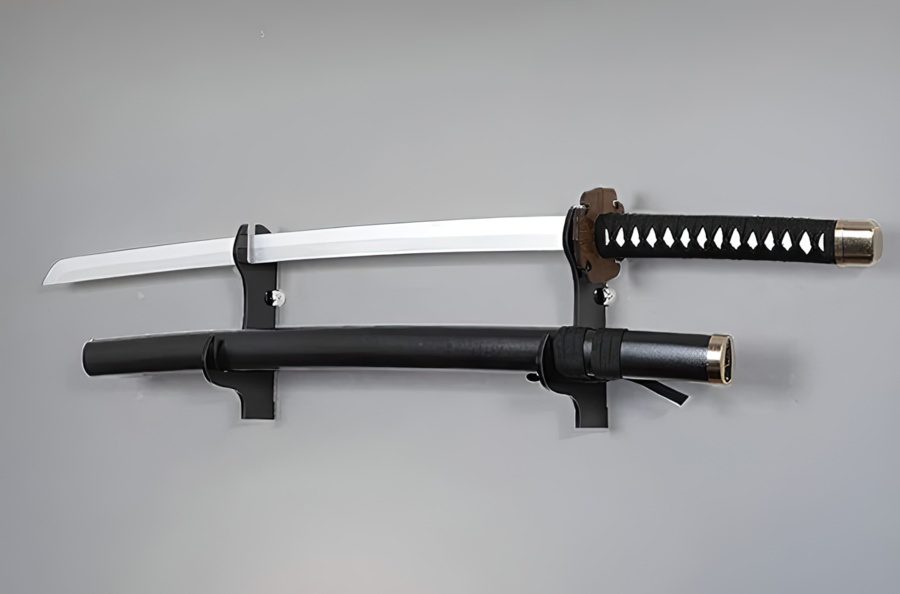
A popular way to display a katana on a wall is using a hanger which is traditionally made out of wood and comes in two separate pieces. One is mounted on the left and the other on the right. Japanese katana wall hangers have two tier levels, and if preferred, the scabbard can be placed on one and the katana blade on the other.
Another way to use the tier levels is by mounting a daisho set, which can come with a smaller wakizashi or tanto sword. Wall hangers are easy to mount and do not take up a lot of space on the wall. Wall hangers give Katana sword a conventional look as if placed on a Japanese katana kake.
Wall Sword Stand

The katana sword is traditionally mounted on a sword stand and placed on a hard surface. To better replicate this ancient method used by the samurai today, a sword stand can be mounted on the wall. A large sword stand can take up more room than the previous methods but presents a common way of displaying a katana.
Using a wall-mounted sword stand is a good alternative to placing the sword on the floor. A wall katana sword stand is aesthetically pleasing as it often depicts different decorations such as Japanese art backgrounds like ukiyo-e or nihonga, samurai inscriptions, wooden boards, and mounted tsuba guards. Some can hold smaller decorative objects.
Wall Sword Rack
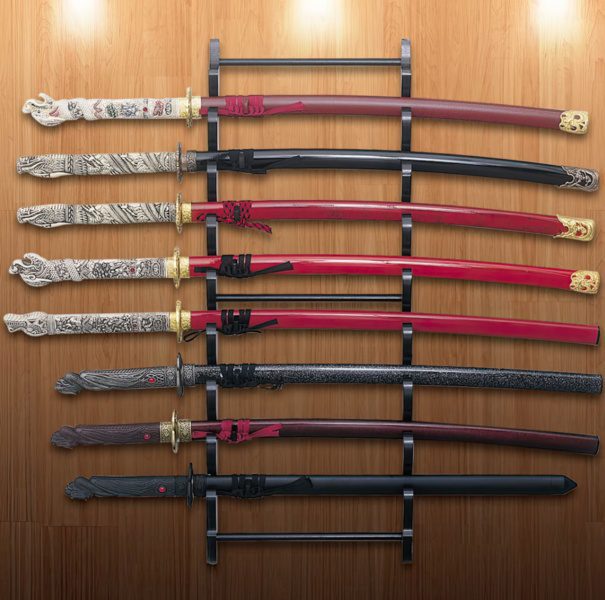
A wall sword rack is a popular way to display multiple katana swords together, which is ideal for sword collectors. A wall sword rack usually has a variety of different tier levels which interconnected to each other. While being a popular way to store katana swords, it is also a good option to display the katana blades.
The katana swords can be placed on top of one other inside their scabbards depending on their length, different motifs, and elements. This can also depend on separate functionalities like being battle-ready or purely decorative. The katana wall sword rack is easy to mount and is usually placed vertically. They are simple in design and usually made out of wood.
Sword Case

Although very common, a katana sword can be displayed inside a sword case that has been previously mounted on the wall. This method and equipment provide an extra layer of protection for the blade against corrosion, rust, and other effects of the open air, such as humidity.
The katana sword case can have Japanese cultural elements and likely will have a wall hanger similar to a katana kake inside it. Mounting a katana sword case requires a little more skill and may use more wall space. The katana sword case is an excellent idea for antique or replica nihonto swords. It is also a great solution for displaying a non-sheathed katana.
Extra Detailing
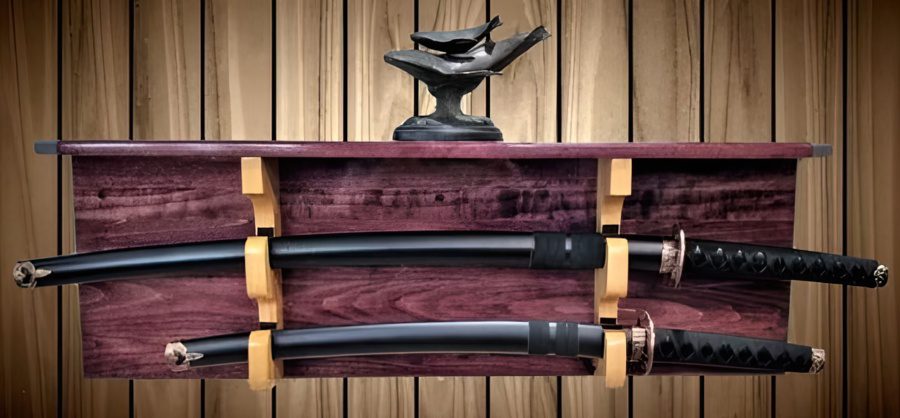
Some katana wall display mounts have additional space to add traditional details such as Japanese juniper, pines or maple trees, shinto torii gates, different zen objects, or small statues.
This extra detailing surface can be on top of the sword mount or on the bottom and can also be used for housing a traditional Japanese katana maintenance kit.
Katana Wall Displaying Tips
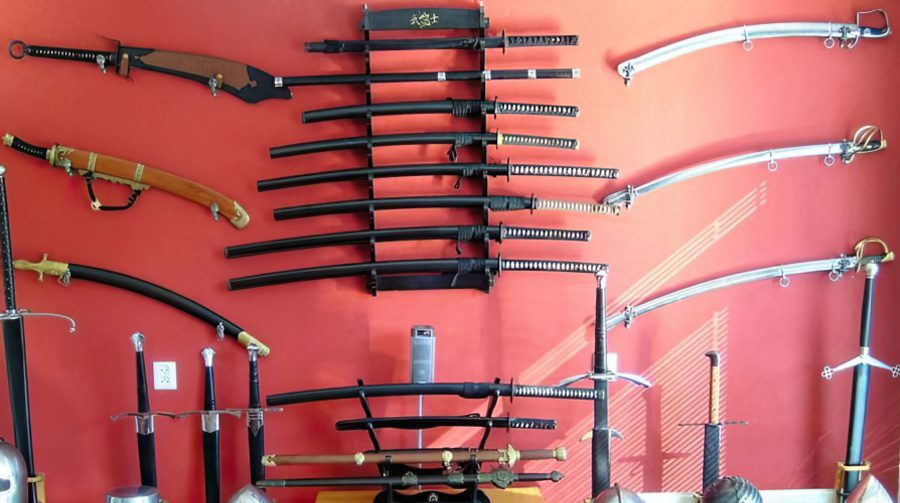
When a katana is placed on the wall, it can be seen easily and admired. While this is the ideal way to display katanas, especially among sword enthusiasts, some precautions should be taken. Here are a couple of general tips to be considered when displaying a katana on a wall.
- Purpose – the location of the katana should be considered if the weapon is used for decorative purposes or for training
- Safety – correct proportions and measurements should be carefully followed so the katana doesn’t fall from its mount and cause injury to an individual
- Environment – the katana should be mounted in an area with a lower temperature and humidity
- Space – katana swords should be placed in a low-traffic area to avoid the possibility of being bumped into
- Guard – the tsuba guard should be on the inside of the wall mount so that the sword does not come lose from its scabbard if placed horizontally
- Sunlight – it is advisable to avoid displaying the katana in direct sunlight as, over time it can damage the blade or scabbard
- Scabbard & Sheathed – the blade should be sheathed and kept inside the scabbard so it is well protected from rust and corrosion
- Tradition – to follow the traditional samurai Katana display method, the handle should be on the left, the blade and tip to the right, and the sharpened edge facing upward




